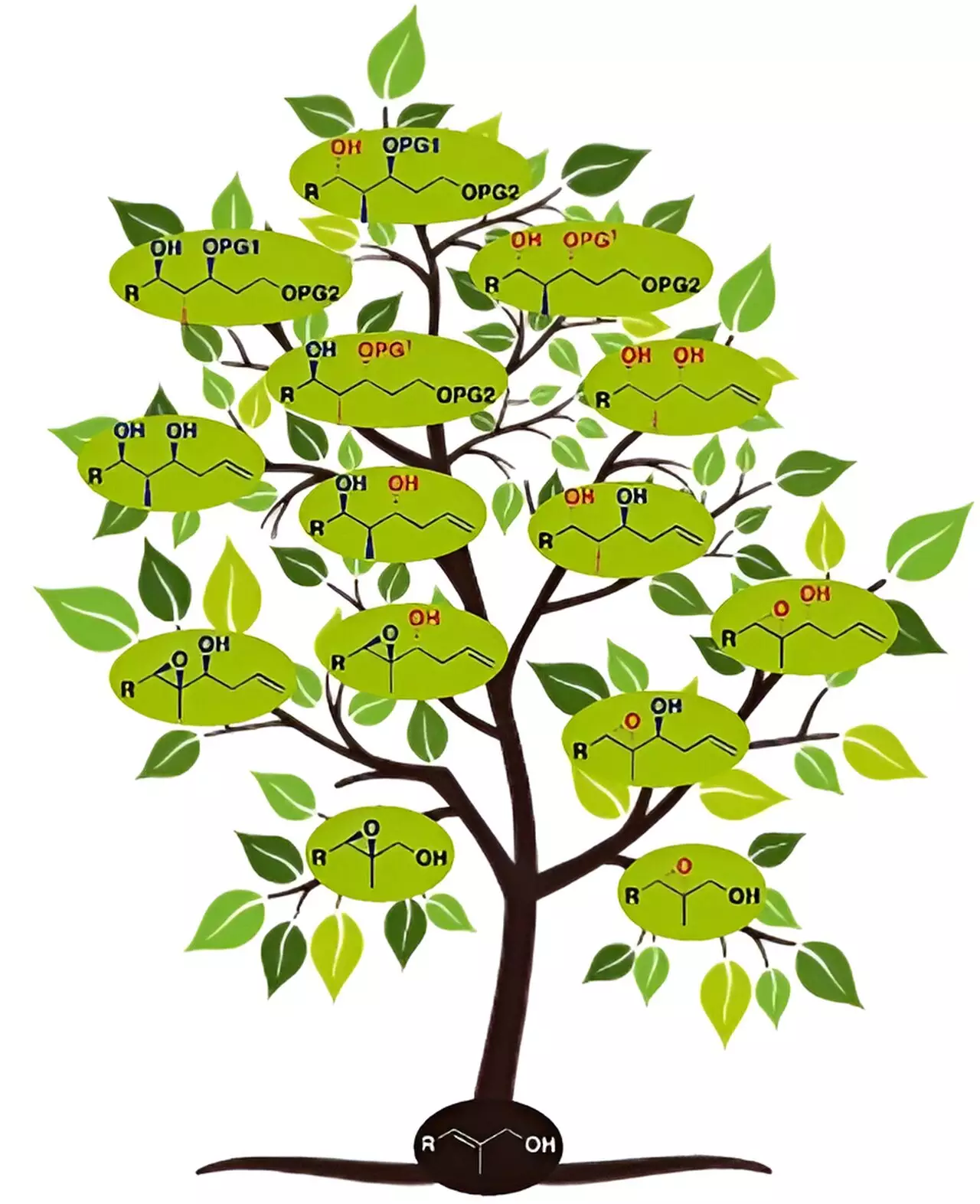In a groundbreaking development, chemists at the University of Bonn have made a significant breakthrough in the synthesis of potential drugs and natural products. This research, recently published in Angewandte Chemie International Edition, focuses on the production of polypropionate building blocks, essential for creating reserve antibiotics to combat infections caused by drug-resistant bacteria. The team at the University of Bonn has achieved a remarkable feat by producing all eight possible variants of these building blocks from a single starting material, marking a crucial advancement in the field of drug synthesis.
The concept of chirality, referring to the existence of mirror-image forms of molecules, plays a vital role in drug development. Professor Andreas Gansäuer highlights the diverse properties exhibited by chiral compounds, pointing out the example of carvone, where the right-handed form emanates a caraway scent while the left-handed form contributes to peppermint’s fragrance. Understanding the distinct properties of these mirror-image forms is essential in creating effective and safe drugs, emphasizing the importance of utilizing the correct variant in pharmaceutical formulations.
While polypropionates occur naturally, their selective production in specific variants with high levels of purity presents a significant challenge in drug manufacturing. The conventional methods for synthesizing polypropionates have been intricate and time-consuming, limiting their widespread application. However, the innovative approach developed by Gansäuer and his team streamlines the process, allowing for the efficient production of desired variants from a single alcohol-based starting material. This advancement opens up new possibilities for drug synthesis by offering a simplified and sustainable method for creating complex molecules.
By combining existing synthetic techniques with a new method called hydrosilylation, the researchers at the University of Bonn have devised a strategy to generate the eight isomers of polypropionate building blocks. The step-by-step process, akin to the growth of branches on a tree, involves the sequential addition of fluoride and titanium to produce the mirror-image forms. This innovative approach not only enhances the efficiency of the synthesis but also eliminates the need for low temperatures and precious metal catalysts, making it a more environmentally friendly technique.
The implications of this research extend beyond the synthesis of polypropionates, serving as a foundation for drug discovery and development. The ability to produce multiple variants of a compound opens up avenues for exploring diverse molecular structures and identifying new drug candidates. Gansäuer emphasizes the significance of having access to a diverse range of isomers, facilitating comprehensive substance screening and increasing the likelihood of discovering effective therapeutic agents.
The pioneering work carried out by the chemists at the University of Bonn represents a significant milestone in the field of drug synthesis. By revolutionizing the process of creating polypropionate building blocks with enhanced selectivity and efficiency, this research has the potential to revolutionize drug discovery and pave the way for the development of novel pharmaceuticals. The innovative synthetic approach developed by Gansäuer and his team showcases the power of chemical research in addressing complex challenges in medicine and highlights the critical role of chirality in molecular design.


Leave a Reply